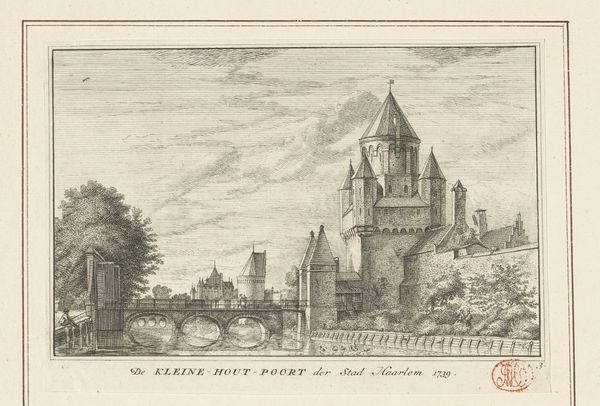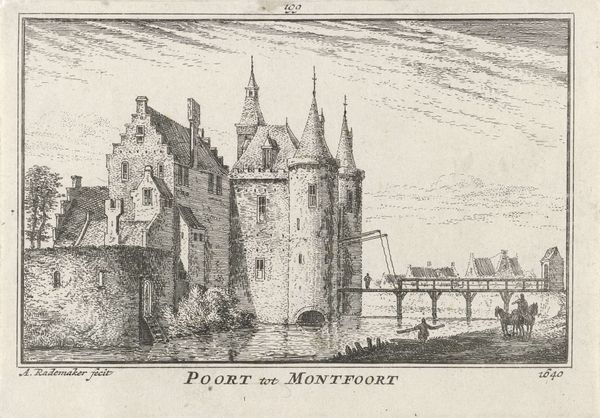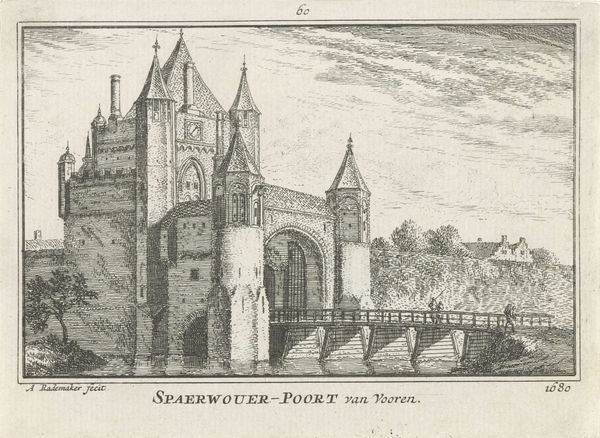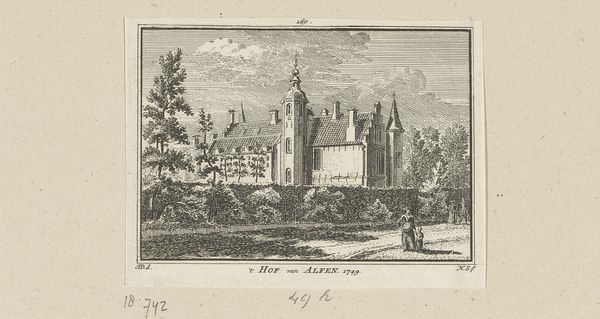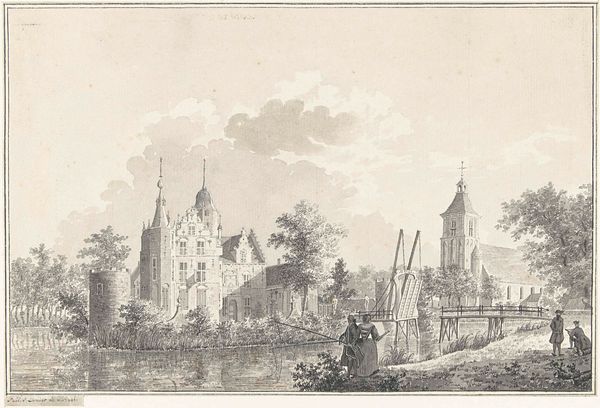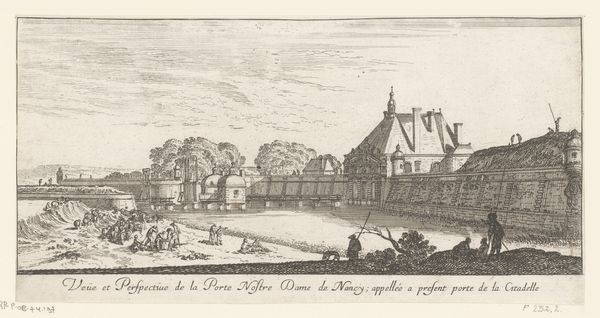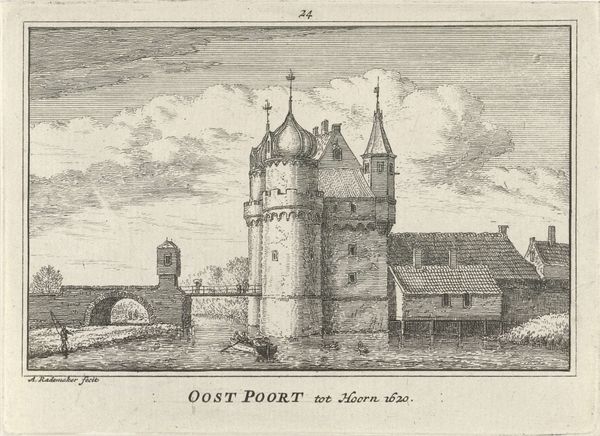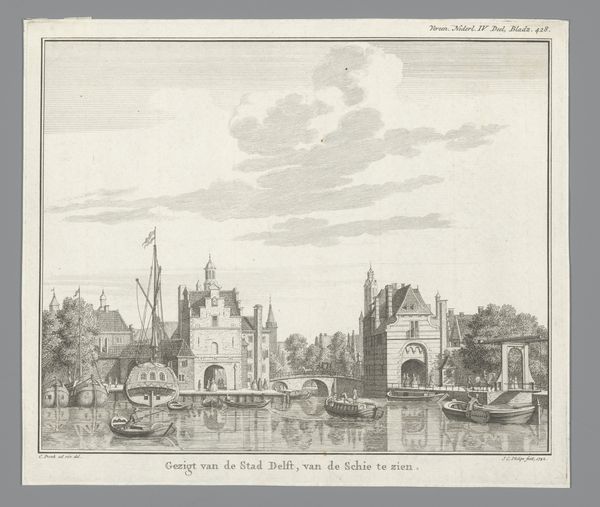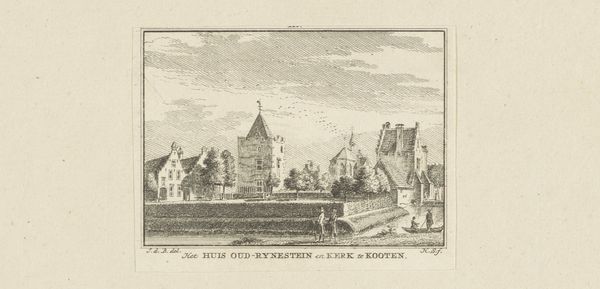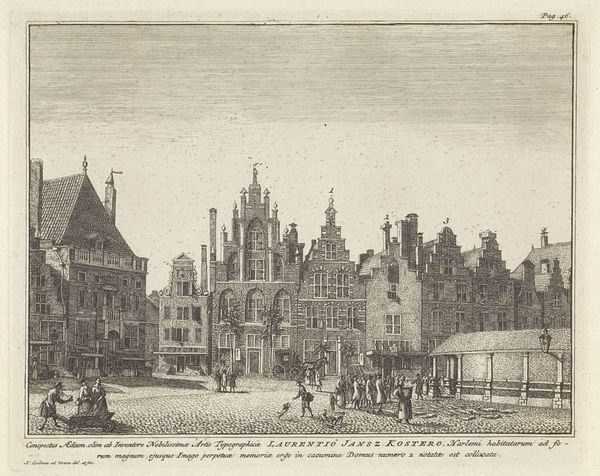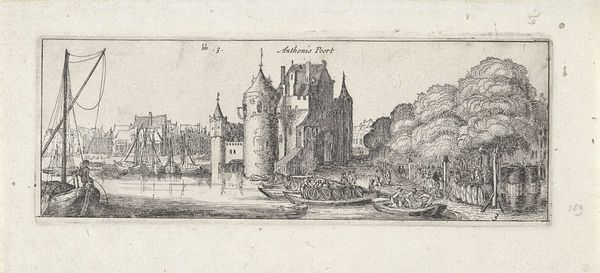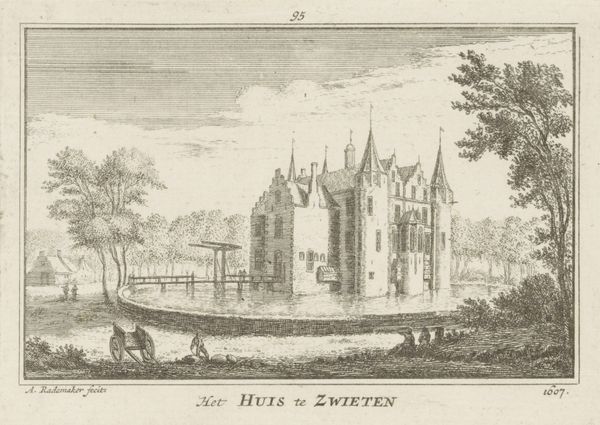
print, engraving
#
aged paper
#
baroque
#
dutch-golden-age
# print
#
old engraving style
#
landscape
#
cityscape
#
engraving
Dimensions: height 80 mm, width 115 mm
Copyright: Rijks Museum: Open Domain
Abraham Rademaker created this print of the Grote Houtpoort in Haarlem using etching in 1682. Here, the imposing gate is depicted with great attention to architectural detail. The surrounding landscape, with its tranquil waterway and figures crossing the bridge, creates a scene of everyday life. But what was the function of this imagery at this moment in Dutch history? Rademaker was one of many artists producing topographical prints in the Netherlands at this time. These prints played a significant role in shaping local identity. As the Dutch Republic consolidated its power, images like these fostered a sense of shared heritage, pride, and belonging. The detailed rendering of specific landmarks speaks to the growing importance of civic identity. To fully appreciate the cultural significance of this print, we can consult historical maps, city archives, and period guidebooks. These resources provide invaluable insights into how the Dutch perceived their cities. The meaning of art is always contingent on social and institutional context.
Comments
No comments
Be the first to comment and join the conversation on the ultimate creative platform.
